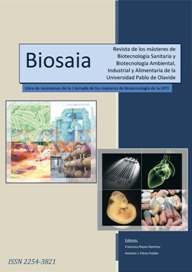Sirtuin 1 activation as a new therapeutic target for age-related macular degeneration
Palabras clave:
age-related macular degeneration, resveratrol, sirtuin 1Resumen
Motivation: Age-related macular degeneration (AMD) is a retinal degenerative disease that affects the macula which is the central part of the retina. The macula is enriched in cone-photoreceptors and is responsible for color and fine detail vision. AMD is the major cause of blindness in adults in the developed world. In the search for new treatments, numerous lines of evidence suggest that dietary polyphenols such as resveratrol have the capacity to mitigate age-associated diseases due to their antioxidant capacity, their ability to activate the antioxidant defenses, and their anti-inflammatory capacity. These effects are partly due to activation of deacetylase enzymes like sirtuin 1 (SIRT1). The problem is that bioavailability of resveratrol is low considering its poorly solubility and high metabolic rate. In addition, resveratrol is toxic at high doses. Because of this, previous work of our group had synthetized resveratrol derivatives that improve its characteristics and maintain or improve its therapeutic effect. These compounds have been tested in retinal degenerative animal models where they have shown neuroprotective effect. In the present work, we aim to study the mechanism of action of these compounds in a cellular model and the implication of SIRT1 in order these derivatives serve as future treatment for AMD.
Methods: All the analysis has been carried out on a human retinal pigment epithelial cell line (ARPE-19). Cells have been treated with different concentrations of resveratrol and its derivatives. The treated cells have been subjected to toxicity assays and have also been analyzed using molecular biology techniques such as quantitative PCR, immunofluorescence and western blot. In particular, it is studied whether the mechanism of action is due to an increase in expression or activity of SIRT1 at different concentrations.
Results and conclusions: Up to now, it has been observed that the different derivatives are not toxic at low concentrations but at high concentrations. In addition, they are capable of increase the activity of SIRT1 dependent on concentration, as well as the mechanism of action may be mediated by the activation of HSP70, a heat shock activated chaperone whose transcription factor is deacetylated and activated by SIRT1. Later, these derivatives will be tested in a cellular model of protein aggregation, mimicking what occurs in the retinal epithelium with a mutation that causes macular degeneration.





